ART: Frank Lloyd Wright
Architectural renderings of beauty
I’ve had a thing for FLW since I was very young — probably instilled when, as a boy, I would lie on the floor of my father’s study in Florida and pore through The Living City before I could even read the words. Much later I went to the trouble and non-trivial expense of acquiring a near-pristine hardcover first of the book, and posters of architectural renderings of his buildings are on the walls of two rooms of our current house. There’s a quote from him at the beginning of my novel The Straw Men.
Like so much that we find beautiful or appealing, there’s several things going on. Yes, an appreciation of the work; and yes, childhood resonance; but also some way in which it touches the imagination, evoking a future or parallel present which speaks to both. I simply know that when confronted by something by FLW (and to a lesser degree, key pupils like John Lautner, responsible for buildings like the Sheats-Goldstein House and the Chemosphere, both of which you’ve seen in a bunch of movies, including The Big Lebowski and Body Double), it feels right.
There’s some interesting work going on right now in producing 3D renderings of Wright buildings that either disappeared or were never built. Spanish architect David Ramero is working hard on it, and there’s more here… Angi.
And of course AI art freaks like me are now conjuring renderings of buildings in a futuristic version of Prairie Style, buildings that he never conceived of:
But there’s such pure beauty in the original 2D renderings. Wright was an extraordinary draughtsman on top of everything else, bringing beauty and poise to renderings of everything from domestic structures to the Guggenheim.
The quote I used for The Straw Men — which, curiously, was relevant, despite the novel mainly being about a conspiracy of serial killers — was “Of the hill, not on the hill”, a concise enshrinement of his beliefs around how architecture should not be imposed upon a landscape, but make itself a part of it.
That’s there in each of these renderings, too.
Of course I’m also quite a fan of Brutalism, the entire philosophy of which seems to be saying a hearty “Fuck you” to the landscape, but that’s just me.


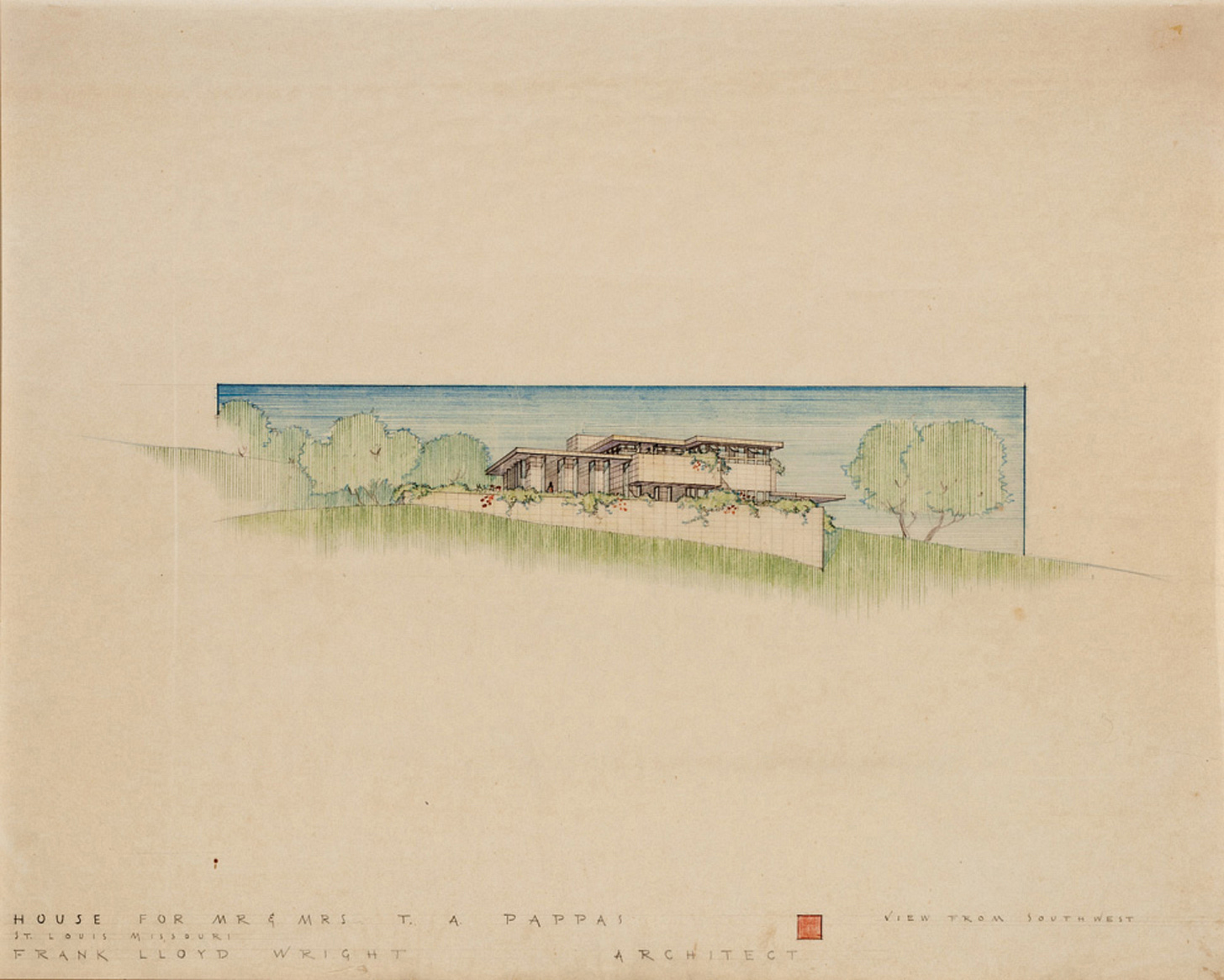
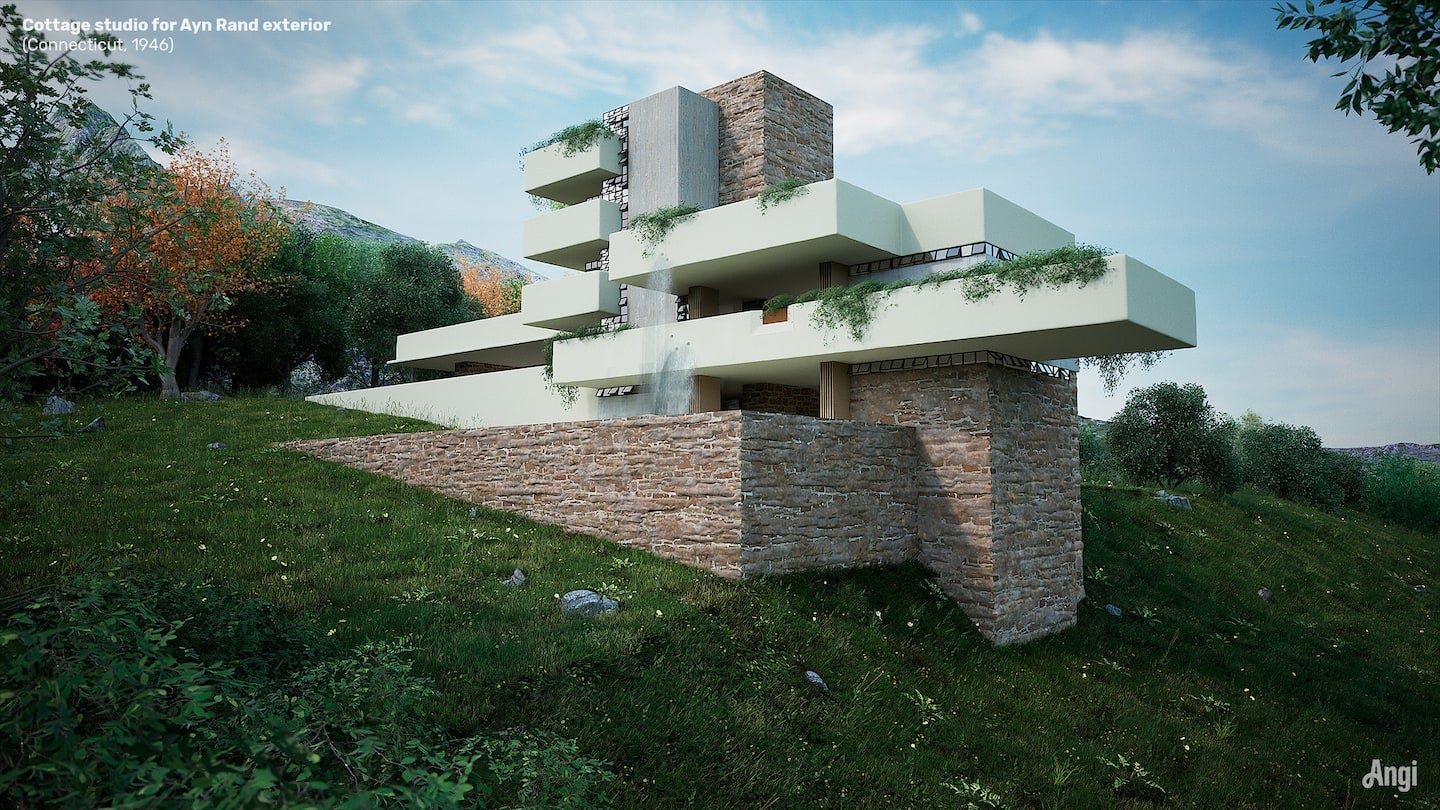

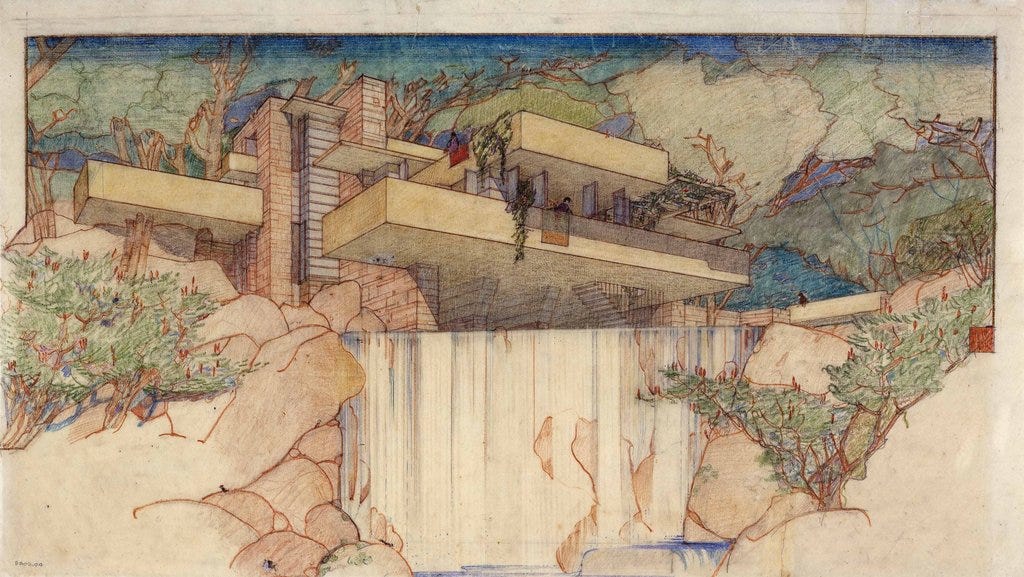

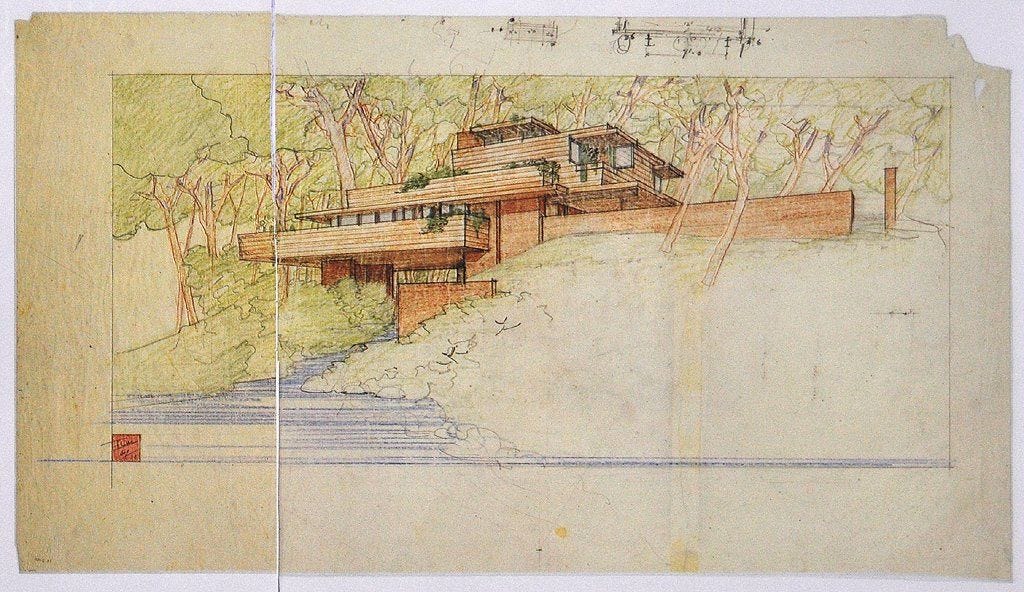
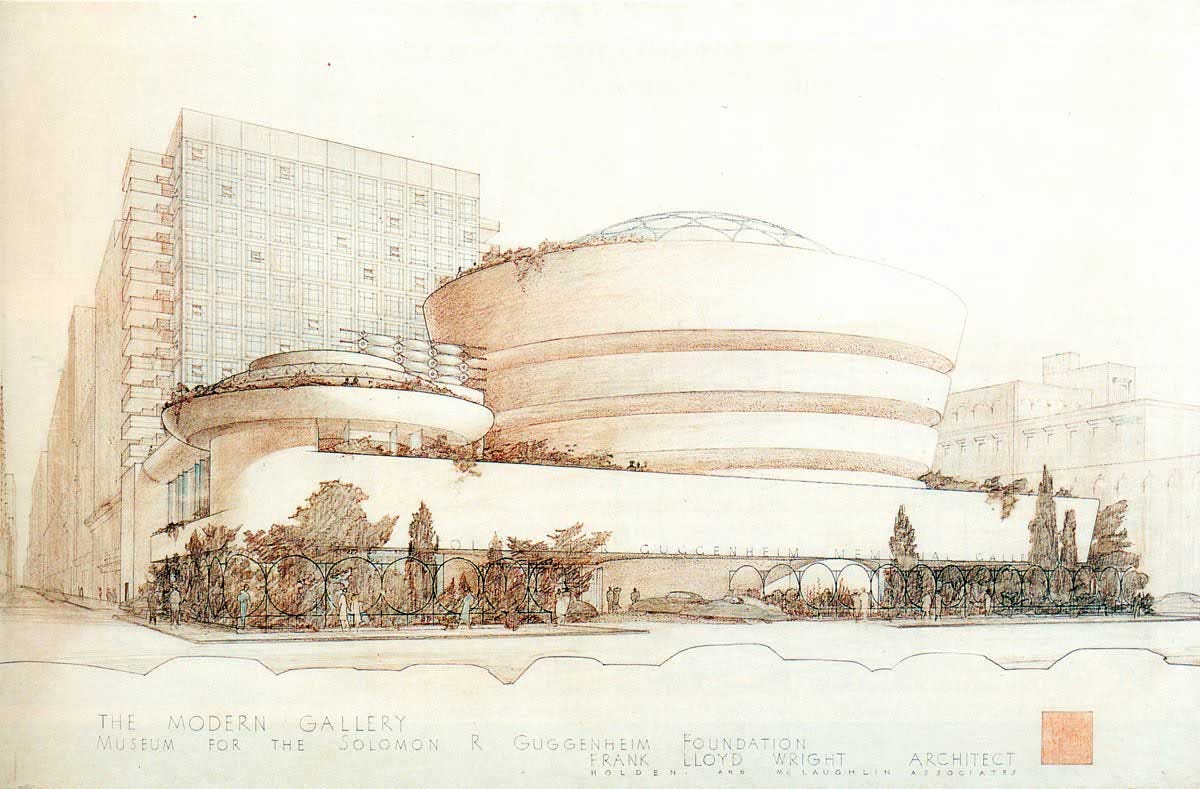
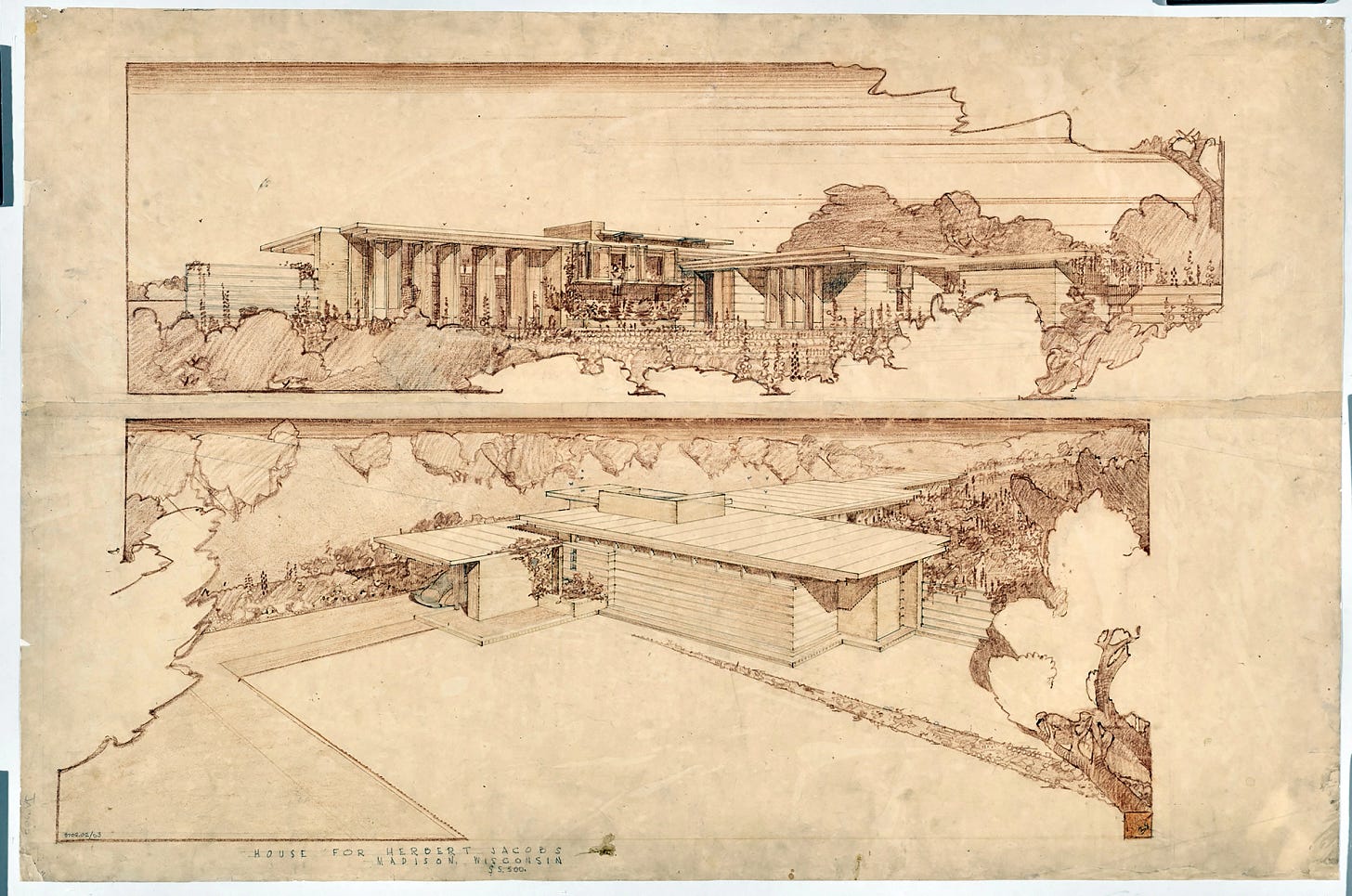
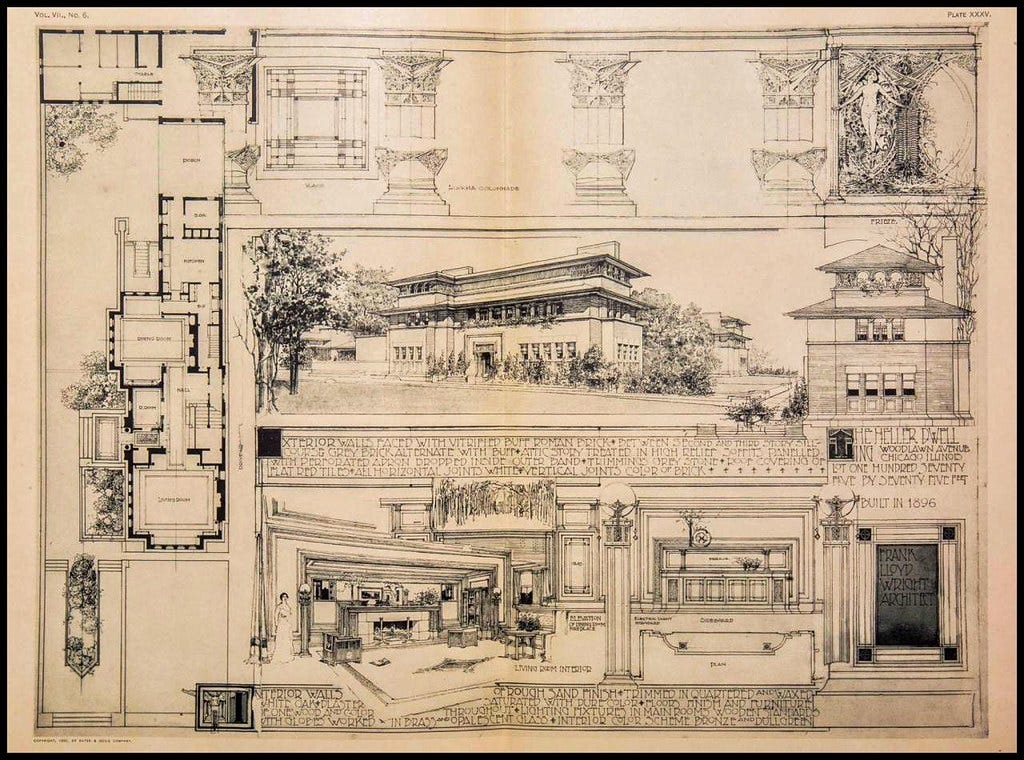
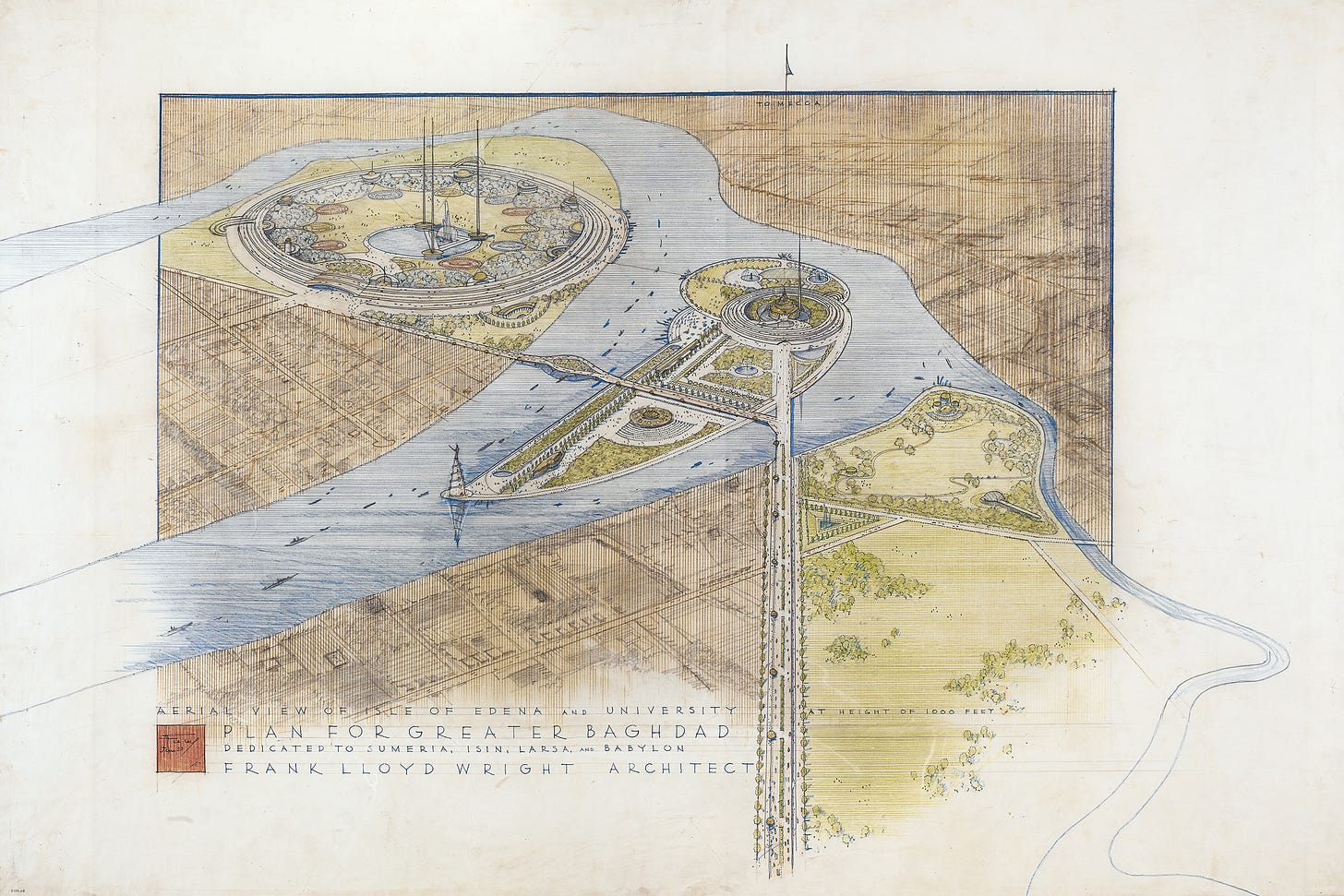
Thanks for the thought-provoking post, as always.
Interesting parallel between “of the hill, not on the hill” and mountain biking trails: like FLW’s buildings (and drawings), the best examples are organically flowing & sculpted *from* the earth, not built or constructed *on* it. You’re truly riding the natural contours, despite the artificial work it took to make the trail and almost exaggerate what was already there, while maintaining the naturalness of the landscape.
You’re teaching me a lot. Thank you. I will research and delve deeper in my spare time.